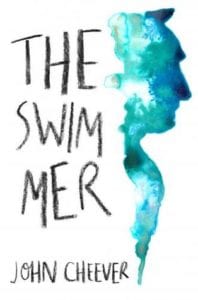
Reading John Cheever’s “The Swimmer”
by Charles May
may-on-the-short-story.blogspot.com
Two of John Cheever’s best known early stories, “Torch Song” and “The Enormous Radio,” are outright fantasies. Later stories, such as “O Youth and Beauty” and “The Country Husband,” are more realistic treatments of middle-aged men trying to hold on to youth and some meaningful place in life. “The Swimmer” combines this typical realistic Cheever theme with his penchant for the fantastic.
The basic problem in reading “The Swimmer” is determining the nature of the reality of the events at any given point in the story. As suggested by Hal Blythe and Charlie Sweet (Blythe, Hal, and Charlie Sweet. “Man-Made versus. Natural Cycles: What Really Happens in ‘The Swimmer’.” Studies in Short Fiction 27 (1990): 415-18), the reader must decide if the first part is fantasy, as Neddy thinks of earlier and happier times, or if the last part is a fantasy that Neddy projects of his future as he waits in the gazebo for the storm to pass.
Clues to the time distortion are: the tree that is losing its leaves in summer; Neddy’s wondering if his memory is failing him; the references to misfortunes he seems to know nothing about; his lose of weight that makes his trunks feel loose; his increasing sense of fatigue and age. This story is a reversal in some ways of Ambrose Bierce’s experimentation with the distortion of time in his famous “An Occurrence at Owl Creek Bridge.”
Whereas in Bierce’s story, a short period of “real time” seems to be unnaturally lengthened, in Cheever’s fantasy, a long period of “real time” seems unnaturally foreshortened. Clues are given to this distortion in both stories, because in Bierce’s story the central character must be convinced that what he thinks is happening is “really happening,” whereas in Cheever’s story the central character must be allowed to believe that his metaphoric swim through future or past time (depending on your perspective) is actually a swim in present time through space.
The metaphoric nature of the swim is suggested at various points in the story. For example the idea that he is an explorer, a legendary figure, prepares the reader for the tragic nature of his experience; the fact that he thinks of the pool as a river suggests the conventional fabulistic metaphor of “the river of life”; and the fact that near the end of the story he feels he has been “immersed too long” suggests a basic flaw in his character for which his fantasy experience is a symbolic embodiment.
An interesting full-length film version of this story was released in 1968. Directed by Frank Perry and starring Burt Lancaster as Neddy, the film represents an effort rare among Hollywood films to remain true to the ambiguous dream/reality status of the original story. Although the film necessarily invents additional scenes — the most cliched being a series of corny and predictable scenes between Lancaster and a young girl who once was a baby-sitter for his children — for the most part the film does an excellent job of presenting Neddy’s movement through space as actually a movement through time.
The basic difference between the story and the film is that whereas Cheever’s original story has a dream-like fable nature, Perry’s film focuses more on the character of Neddy as a man who, although growing older and wishing to hang on to young, has neglected his family and allowed his life to pass him by. The final scene when, tired and worn, he hammers on the door of his deserted house, is shocking and powerful, even tragic.
A brief footnote: In one of the scenes where Neddy stops at a pool party, John Cheever can be seen in a bit part walk-on.
Reprinted with permission. All rights reserved.
